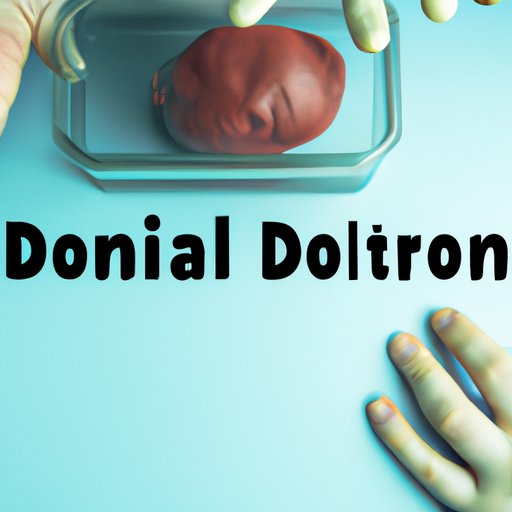Introduction
Donating your body to medical science is a generous act that can help advance medical research and save lives. But what does it really mean to donate your body to medical science? What are the benefits and risks involved? This article will provide a comprehensive guide to donating your body to medical science, so you can make an informed decision about whether or not it’s right for you.

A Comprehensive Guide to Donating Your Body to Medical Science
If you’ve decided to donate your body to medical science, it’s important to understand the process. Here’s a step-by-step guide to becoming a donor.
How to Become a Donor for Medical Science Research
The first step in becoming a donor is to contact the medical school or research institution where you wish to donate your body. Most schools have their own specific requirements, such as age and health restrictions, so be sure to ask about these before proceeding. Once you’ve been accepted as a donor, you’ll need to complete a donor form and provide personal information and contact details.
Understanding the Process of Donating Your Body to Medical Science
Once you’ve completed the necessary paperwork, you’ll need to make arrangements for your body to be transported to the medical school or research facility. Usually, the institution will cover the costs associated with transportation and storage. You may also be asked to sign a waiver releasing the institution from any liability for damages or injuries caused by their use of your body.

The Legal Implications of Donating Your Body to Medical Science
Before you donate your body to medical science, it’s important to understand the relevant laws and regulations. Here’s a brief overview of the legal implications of body donation.
Laws and Regulations Governing Body Donation
In the United States, each state has its own laws governing body donation. Generally speaking, these laws require that donors must be 18 years of age or older and that they must have given written consent to donate their body. It’s also important to note that some states may require the donor’s family to pay for the cost of transporting the body to the medical school or research facility.
Rights of Donors and Their Families
It’s important to know that donors and their families have certain rights when it comes to body donation. For example, donors have the right to revoke their consent at any time, and families have the right to request the return of the remains after the research is complete. In addition, all donors and their families should be treated with respect and dignity throughout the donation process.
What Happens After You Donate Your Body to Medical Science?
Now that you understand the process of donating your body to medical science, it’s important to know what happens after you’ve made the decision to donate. Here’s a look at the most common uses for donated bodies and what happens to them after the research is complete.
Types of Research Conducted Using Donated Bodies
Donated bodies are used for a variety of medical research purposes, including anatomy and physiology studies, surgical training, and disease research. In some cases, donated bodies may even be used for organ transplants.
Duration of the Donation Process
The duration of the donation process depends on the type of research being conducted. In most cases, the body will be used for one to three years, but some studies may require longer periods of time. After the research is complete, the body will be cremated and the remains returned to the donor’s family.
Respectful Treatment of Remains
It’s important to note that all donated bodies are treated with the utmost respect during medical research. All remains are carefully labeled and stored in a secure location until the research is complete. In addition, all bodies are handled with care, and any organs or tissues that are removed for research purposes are replaced prior to cremation.
The Pros and Cons of Donating Your Body to Medical Science
As with any life decision, there are both advantages and disadvantages to donating your body to medical science. Here’s a look at the pros and cons of this generous act.
Advantages of Body Donation
The most obvious benefit of donating your body to medical science is that you’re helping to advance medical research and potentially save lives. Additionally, body donation is usually free, so you won’t have to pay for a traditional funeral or burial. Finally, donating your body is a great way to honor your legacy and give back to the community.
Disadvantages of Body Donation
One potential downside of body donation is that you won’t be able to have a traditional funeral or memorial service. Additionally, the process may take several weeks or months, so you won’t be able to have an immediate burial or cremation. Finally, there is always a chance that something could go wrong during the donation process, so it’s important to consider the risks involved.
Conclusion
Donating your body to medical science is a generous and noble act that can help advance medical research and potentially save lives. Before making the decision to donate, it’s important to understand the process, legal implications, and potential risks involved. While there are some potential drawbacks, the benefits of body donation far outweigh the risks. Ultimately, the decision to donate your body to medical science is a personal one, and only you can decide if it’s right for you.
(Note: Is this article not meeting your expectations? Do you have knowledge or insights to share? Unlock new opportunities and expand your reach by joining our authors team. Click Registration to join us and share your expertise with our readers.)
